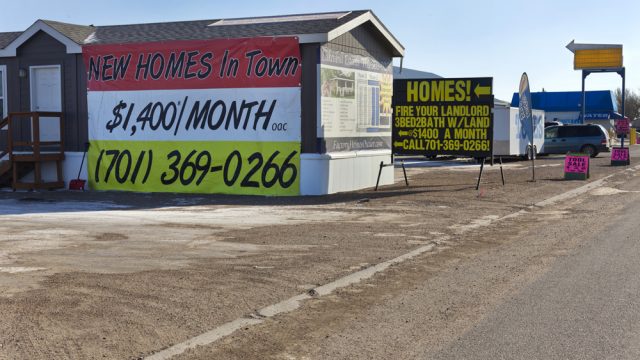North Dakota Has Highest Risk Of Home Price Declines In The Nation

Available housing signs are shown in Williston, North Dakota February 9, 2014. North Dakota saw a 200 percent jump in homelessness last year, the biggest increase of any state. There are now 2,069 homeless people in the state of 699,628, according to data from the U.S. Department of Housing and Urban Development. Picture taken February 9, 2014. REUTERS/Annie Flanagan (UNITED STATES - Tags: POLITICS BUSINESS REAL ESTATE) - RTX18M6F
This probably isn’t as bad as it sounds:
North Dakota and Texas have the highest risk that home prices will decline among all states, because of their reliance on the oil industry, according to Arch Mortgage Insurance.
North Dakota has a risk of home price decline of 38%, followed by Texas at 32%, according to the summer edition of Arch’s Housing and Mortgage Market Review. California has the lowest risk of home price decline at 8%.
“North Dakota is especially vulnerable because it’s seen unusually rapid home price appreciation over recent years,” the article continues. But what that really means is that housing prices in our state – which are still very high, at least out here in western North Dakota – are falling back down to a more reasonable level.
In other words, the price spike brought on by a rapid increase in demand coupled with slow supply as new construction was hampered by labor shortages and a weather-constricted building season is wearing off. I have some anecdotal evidence of this too. Just last evening I was speaking with a neighbor who had recently moved in. He and his family had previously lived on the other side of our development, just a couple of blocks away. They moved the short distance because they were able to get a $400/month rent savings, an opportunity available because the housing market in Minot has become much more competitive over the last year or so.
But prices aren’t crashing. He’s still paying a very healthy level of rent, and there is still strong demand for housing in the community.
Prices are declining because supply has caught up with demand. That’s a good thing, not a negative, though one hopes that the developers and investors still building realize that the edge of the market boom is here.




